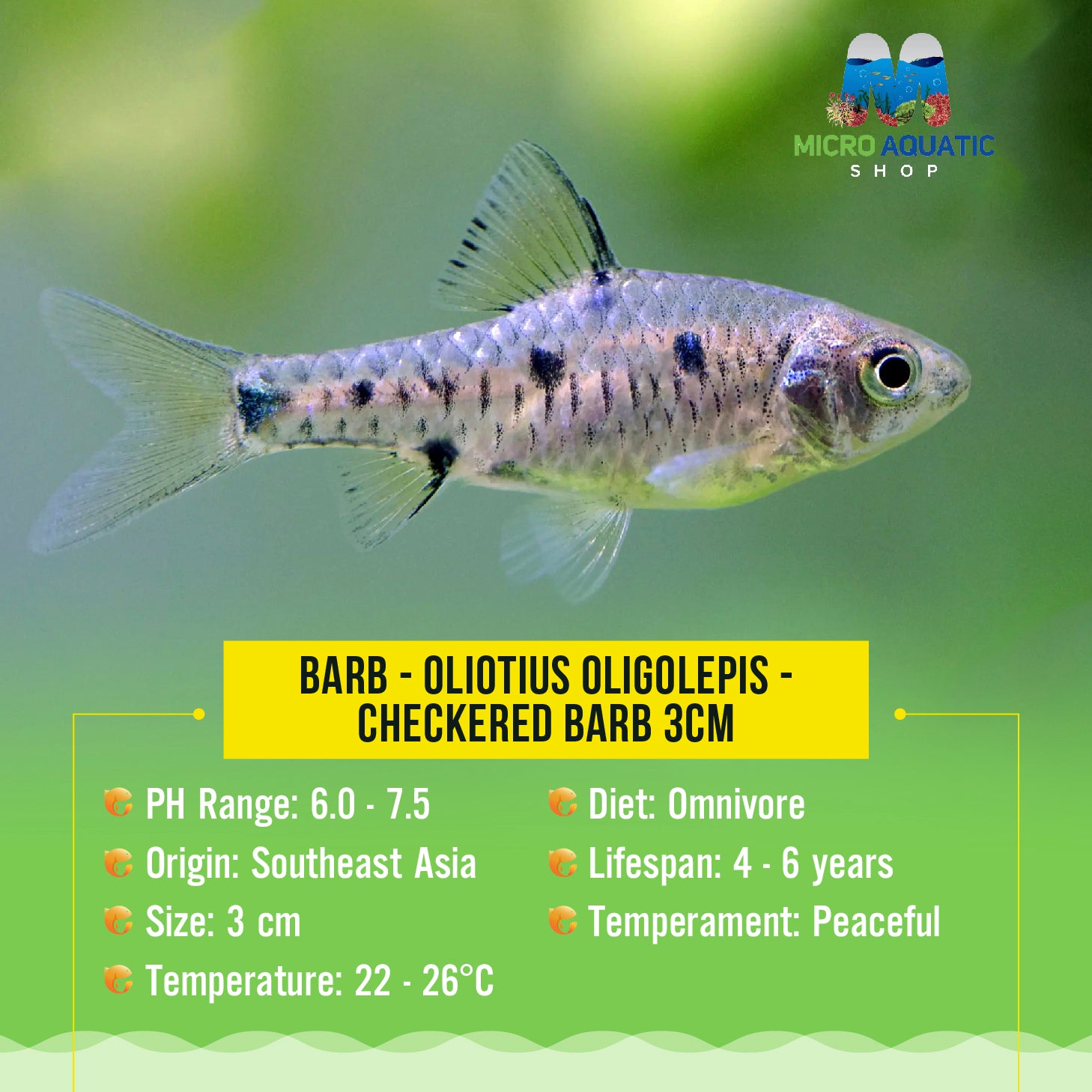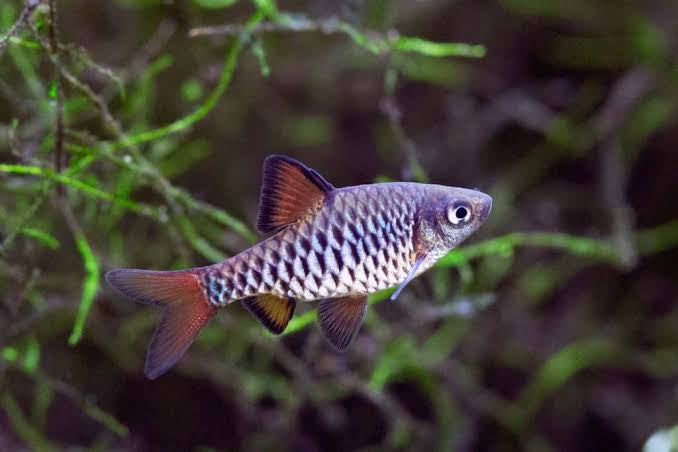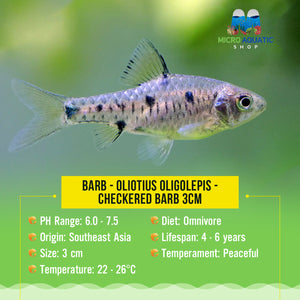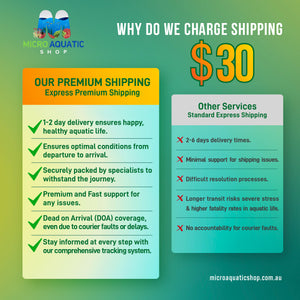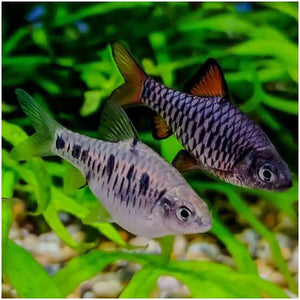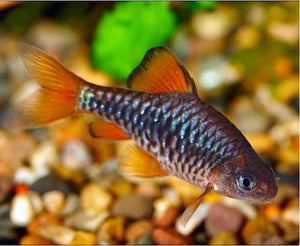Barb - Oliotius oligolepis - Checkered Barb 3cm
Guarantee Safe Checkout
✅Checker Barb Facts
- These fish get their name from their shiny silver and black scaling that mimics a checkerboard pattern.
- They get their species name Oligolepis from the ancient greek word Oligoi, meaning ‘few,’ and Lepis meaning ‘fish scale.’
- Although they are native to Indonesia, these fish were introduced into Columbia, where there are now large established populations of Checker Barb in the wild.
✅ Barbs are a wonderful addition to any aquarium, not only because of their striking coloration but also for their lively behavior.
Food and Diet
In the wild, the Checker Barb is an omnivorous fish. They are forager fish, and in their natural habitat, their diet consists of zooplankton, small worms, insects, crustaceans, and plants.
In captivity, they are generally not very picky. They will accept dried foods, live foods, and sinking pellets. Checker Barb fish are not afraid to roam all heights of their aquarium, but they will usually be found at the bottom of their tank, picking algae and other waste to eat off the substrate. They also enjoy heavily planted aquariums and will eat the decaying plant matter. A varied diet is not only good for them but it is also recommended to bring out their best coloring.
For feeding time, it would be best to feed Checker Barb fish 2 times a day. They need to be fed an amount they can consume in a few minutes. It is recommended that worms be fed to them sparingly as they have been known to cause bloating in the Checker Barb.
✅ Tank mates: Loaches, Platy, Catfishes
Consider aggressive if not in a group.
- Water pH 6.5 pH
- Temperature Range 75 – 82°F
Limited Quantity Available - Will Sell out Fast!
Note:
We can’t ship Livestock and Live Plants to WA and TAS due to State Restrictions. Kindly check out our DOA and other policies before purchase!!
What to Expect from Us
All Aquatic plants and animals come with a 100% live arrival guarantee!!

| Quantity |
1pc, Group of 6, Pack 10 |
|---|

